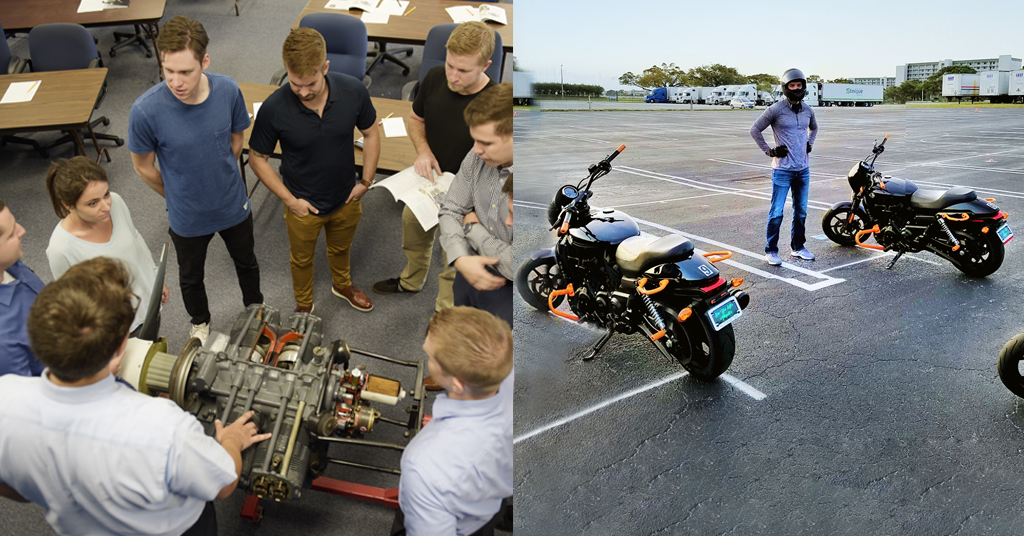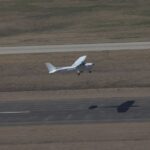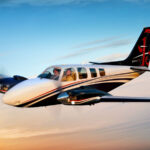By: Steven Daun, National Chief Pilot
It has been about 30 years since I last rode a motorcycle. When I moved from NY to FL in the 80’s I never brought my endorsement over to my new license. My son just turned 18 and is soon off to college. We figured that it would be a fun father/son adventure to ride together when he comes home on college breaks. About this same time a group of fellow workers had decided to go on a “ride” in a few weeks and invited me to join.
As I pondered the possibilities and started to see myself back on a bike, reality soon set in. I wasn’t current or proficient. If you have read my past columns, you will know that when it comes to flying, I am all about currency and proficiency. I figured that if this advice is good for wings, then it must be good for wheels as well.
After several weeks of researching motorcycle classes, I decided to go with the Harley Riding Academy at Alligator Alley Harley Davidson. They explained that there would be a written and a practical test on Sunday to qualify for the endorsement. Their class was divided over a Wednesday night and all-day Saturday and Sunday. Wednesday night consisted of a ground review of operating and safety procedures as well as the laws, equipment and review questions for the final written exam.
One of the first documents that they had us review was their safety procedures. We read it, discussed it and then we had to sign it. As we went through safety instructions, I started realizing the parallels between their school and ours. When a student begins with American Flyers, we review and have them sign our safety procedures document, which sets the stage for positive training.
We met at the range on Saturday morning, and before we could sit on the bike, the coaches made us walk around the bike identifying key components and checking to make sure that everything was where it should be and that there were no surprises. The second parallel between schools, we were “preflighting” a motorcycle; engine, electrical, instruments, wheels and brakes.
The training started with basic skills that built on each other. These skills consisted of “basic attitude riding”: turns, acceleration, deceleration. The instructors discussed the gyroscopic effect of using higher engine RPM for stability as well as the gyroscopic principles that pertain to spinning wheels. This led to a discussion about hydroplaning and effective use of brakes when decelerating from a high rate of speed. Just as we have split brakes (one for each foot) in airplanes, there is a handbrake for the front wheel and a foot brake for the rear wheel on a motorcycle. Just as we do in an airplane, we need to apply even and proportionate pressure to each when stopping. Disproportionate braking can lead to locking up wheels or loss of directional control.
Sunday afternoon consisted of the written and practical test. Yes, this was a three-day class, and yes it was just for a motorcycle endorsement. Yet the mental mindset was like that of a check-ride with an FAA Inspector or DPE. How could this be? After all, much of the ground information was basic and obvious, and we were just riding motorcycles not flying airplanes. How hard could it be?
Did I mention that we were doing most of our training in the rain and on a slick parking lot surface? Sunday came, and it was time for my practical test. The first four of the five tasks when great. The last task of the practical test was to accelerate, stop and then turn. I accelerated the bike to 25 mph and stopped hard as instructed (phew, hard part over, right? Um, no). As I turned from standing still the rear wheel, hit a wet, slick spot and the bike went down. It wasn’t even going one mph. End of practical. I parked the bike and watched everyone else finish their tests.
The other students in the class were great, including my son. They told me things like “I should have passed because I did so well on the other parts,” “that was unfair because of the rain,” “they should just give it to me,” etc. As I thought about and pondered these comments, I couldn’t help but think about the parallels of what had just occurred to what I and all our Check and Assistant Chief Instructors do daily when it comes to APR’s (Achievement Performance Reviews) or end of course checks with our students for their checkride signoff. So many times, a student performs above average on an APR only to do one thing that prevents a successful conclusion to the APR. How could I get mad or angry at what happened? That would make me a hypocrite! I discussed this with my son and explained that I would have lost respect for the coaches if they went against their policies. Yes, my riding instructors did the right thing. In hindsight, I am glad that they did because for the next few days the effects of hydroplaning were in my mind and you can bet that if I am ever caught in the rain on a bike that is one of the major things that I will be thinking about. And if it stops me from dropping a bike in the future, it would have been worth it.
A few days later, Mary, who was the Academy Director, met me at the range and reviewed the basic skills again and when I was ready, administered my practical test again. This time it was sunny, dry and clear outside. As I learned after taking countless checkrides for various certificates and ratings in aviation, it’s not so much the test but how much you can learn from the experience. Especially in those areas that go wrong. If you are unsuccessful at first, don’t beat yourself up over it. Learn from it and make yourself better and stronger. After all, the purpose of evaluations like these, whether it is in aviation or motorcycles, is to find those weak areas and strengthen those skills.
But DON’T, under any circumstances, give up or become deflated. And certainly, don’t doubt yourself. Use it as a catalyst to make yourself better at whatever it is you are trying to accomplish. (And by the way, I did pass the retest!)










